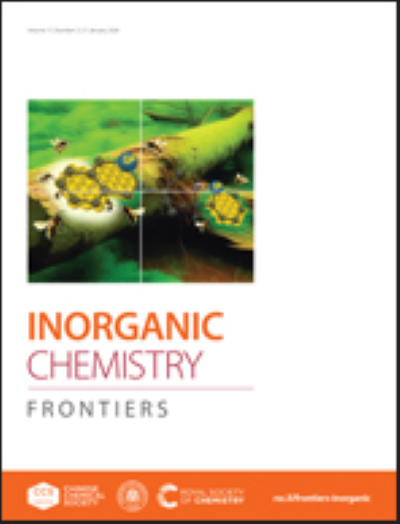Ionic-liquid/metal-organic-framework composites: Synthesis and emerging sustainable applications
IF 6.1
1区 化学
Q1 CHEMISTRY, INORGANIC & NUCLEAR
引用次数: 0
Abstract
Ionic liquids (ILs) as emerging solvents have demonstrated a significant prospective in green chemistry, which can be used as green solvent, high efficiency catalyst, electrolyte, and so on. Metal–organic frameworks (MOFs), also called coordination polymers, are crystalline solids comprising of metal ions and organic linkers through coordination bonds, which are characterized by high porosity. Both ILs and MOFs have been extensively investigated by many groups all over the world, and their applications cover a wide range of fields, including but not limited to separations, catalysis to energy devices. IL/MOF composites, integrating the advantages of ILs and MOFs in one moiety, are a new class of functional materials, which have attracted increasing attention during the past decades. This paper offers an extensive overview on the design, synthesis and sustainable applications of IL/MOF composites and provides some critical viewpoints on the present challenges and future development directions. Firstly, we briefly introduced the background of ILs, MOFs, and the combination of ILs and MOFs. Afterwards, a system discussion on design and synthetic methodology for preparing IL/MOF composite. For each method, the basic chemical or operation principle and benefits/drawbacks are elaborated. Later, an overview on the sustainable applications of IL/MOF composites is provided by highlighting numerous recent representative literatures, covering carbon capture and conversion, chemical catalysis, adsorptive removal of pollutants, and acting as electrolytes and membranes in energy storage devices. Finally, research trends and insights into IL/MOF composites are outlined to extend the family of IL/MOF composites as well as their application scope. This paper is ended with challenges and future opportunities in this emerging area.离子液体/金属有机框架复合材料:合成与新兴可持续应用
离子液体(ILs)作为新兴溶剂,在绿色化学领域具有广阔的应用前景,可用作绿色溶剂、高效催化剂、电解质等。金属有机框架(MOFs)又称配位聚合物,是由金属离子和有机连接体通过配位键组成的结晶固体,具有高孔隙率的特点。世界各地的许多研究小组都对 IL 和 MOF 进行了广泛的研究,它们的应用领域非常广泛,包括但不限于分离、催化和能源设备。IL/MOF复合材料集IL和MOF的优点于一身,是一类新型功能材料,在过去几十年中日益受到关注。本文概述了 IL/MOF 复合材料的设计、合成和可持续应用,并就当前的挑战和未来的发展方向提出了一些重要观点。首先,我们简要介绍了 ILs、MOFs 以及 ILs 与 MOFs 结合的背景。随后,系统讨论了制备 IL/MOF 复合材料的设计和合成方法。每种方法都阐述了基本的化学或操作原理以及优点/缺点。随后,通过重点介绍近期众多具有代表性的文献,概述了 IL/MOF 复合材料的可持续应用,包括碳捕获和转化、化学催化、吸附去除污染物,以及在储能设备中用作电解质和膜。最后,概述了 IL/MOF 复合材料的研究趋势和见解,以扩展 IL/MOF 复合材料的系列及其应用范围。最后,本文总结了这一新兴领域的挑战和未来机遇。
本文章由计算机程序翻译,如有差异,请以英文原文为准。
求助全文
约1分钟内获得全文
求助全文
来源期刊

Inorganic Chemistry Frontiers
CHEMISTRY, INORGANIC & NUCLEAR-
CiteScore
10.40
自引率
7.10%
发文量
587
审稿时长
1.2 months
期刊介绍:
The international, high quality journal for interdisciplinary research between inorganic chemistry and related subjects
 求助内容:
求助内容: 应助结果提醒方式:
应助结果提醒方式:


